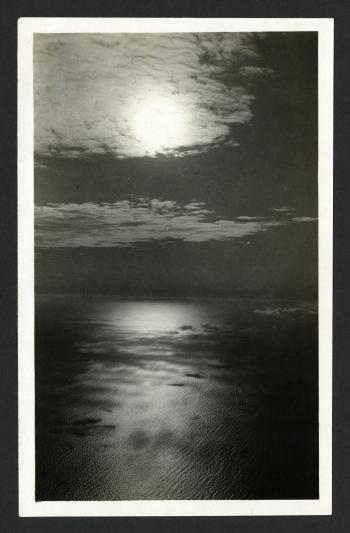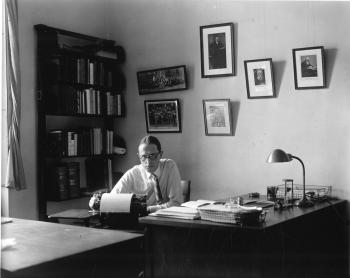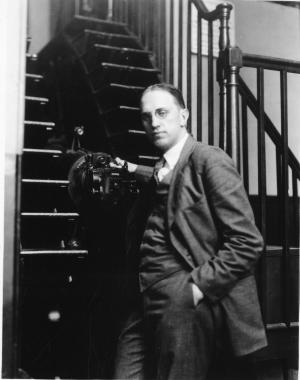Spectacular natural events—earthquakes, hurricanes, floods, and, of course, eclipses—have long been the bread-and-butter of science journalism, via print, radio, television, and now social media. Science Service, too, succumbed to the lure of combining colorful, firsthand descriptions with technical explanations. As Science Service director E. E. Slosson told Yerkes Observatory astronomer Edwin B. Frost, “An eclipse being one of the few scientific events of a spectacular nature which can be predicted in advance, we are going to take advantage of public interest to get as much material in the papers as we can about the sun and recent progress of astronomy in general.”

 Slosson also could not resist the human impulse to be part of the occasion. Although a chemist by training, Slosson decided to join an “expedition” to report on the September 10, 1923 solar eclipse. “I don’t know anything about astronomy,” he confessed to Mt. Wilson Solar Observatory scientist Walter S. Adams, “but I can be relied upon to do as I am told. I know that on eclipse expeditions in remote regions it is customary to draft in everybody, including camp followers like myself.” In this case, the “remote location” was Point Loma, California, which Slosson reached via a cross-country train journey from his office in Washington, D.C.
Slosson also could not resist the human impulse to be part of the occasion. Although a chemist by training, Slosson decided to join an “expedition” to report on the September 10, 1923 solar eclipse. “I don’t know anything about astronomy,” he confessed to Mt. Wilson Solar Observatory scientist Walter S. Adams, “but I can be relied upon to do as I am told. I know that on eclipse expeditions in remote regions it is customary to draft in everybody, including camp followers like myself.” In this case, the “remote location” was Point Loma, California, which Slosson reached via a cross-country train journey from his office in Washington, D.C.
Two years later, Slosson’s colleague Watson Davis had the opportunity to photograph a solar eclipse from the dirigible Los Angeles. For Davis, that January 24, 1925, event included both “the magnificent spectacle of a sun ... completely blotted out by the moon” and the discomfort of frigid conditions aboard an unheated airship.
Science Service eventually began relying more on others to provide such accounts. In anticipation of the August 31, 1932 eclipse, Davis sent a questionnaire to prominent astronomers (like Smithsonian Institution Secretary Charles Greeley Abbot) and directors of U.S. observatories, asking “What instruments will you be using?” and whether they would agree to wire Science Service their “plans and results of observations just before and after the eclipse.” Like today, the potential audience numbers drove the type of coverage. The more dramatic, the better. United Press journalist Raymond Clapper praised the New York Daily News eclipse stories in 1932 for “hitting the average reader on the nose.” As he knew, “the closer you keep to the spot news of the moment, the better play your copy will get.”
Another Science Service staff member, the astronomer James Stokley (1900-1989), suffered more than inconvenience from his desire to cover a solar spectacular up close. In April 1930, while in California to observe an eclipse, the car in which he and other reporters were riding collided with a bus on the way back to file their reports. Stokley’s injury—a major skull fracture—required several months of hospitalization and convalescence, but did not diminish his lifelong fascination with eclipses. In 1932 (by then in charge of the Franklin Institute’s Fels Planetarium), Stokley made arrangements with Conway, New Hampshire officials and gave public lectures to local residents in advance of the Institute’s effort to photograph the August 28 event. The town was decked in bunting, hotels were sold out, and the Chamber of Commerce held a banquet, but (as can happen) clouds obscured the view from the ground.

 Five years later, Stokley and Princeton astronomer James Q. Stewart had greater success when they arranged to observe and record the June 8, 1937 eclipse from the S.S. Steelmaker in the Pacific Ocean. Stokley filmed the seven-minute eclipse in color and sent a dispatch about the experience to the New York Times: “It was my fourth total eclipse” and “the most impressive of all.” A few days later, enthusiastic as ever, he told a friend that he had already calculated how old he would be if he were still alive for the next eclipse of similar length.
Five years later, Stokley and Princeton astronomer James Q. Stewart had greater success when they arranged to observe and record the June 8, 1937 eclipse from the S.S. Steelmaker in the Pacific Ocean. Stokley filmed the seven-minute eclipse in color and sent a dispatch about the experience to the New York Times: “It was my fourth total eclipse” and “the most impressive of all.” A few days later, enthusiastic as ever, he told a friend that he had already calculated how old he would be if he were still alive for the next eclipse of similar length.
For those who will be “under the umbra” on August 21, 2017, the experience will undoubtedly prompt poetry, photographic experiments, and plenty of "ohs and ahs." Those of us under the penumbra, or far away from the path, will be with you vicariously, via television, Twitter feeds, Facebook posts, apps, and Instagram accounts. Enjoy the show! And travel safely on the way home.
Related Resources
Science Service, Up Close: Up in the Air for a Solar Eclipse, The Bigger Picture, Smithsonian Institution Archives
The Smithsonian and the Solar Eclipse, The Bigger Picture, Smithsonian Institution Archives
Science Service, Up Close, The Bigger Picture, Smithsonian Institution Archives
Produced by the Smithsonian Institution Archives. For copyright questions, please see the Terms of Use.

Leave a Comment